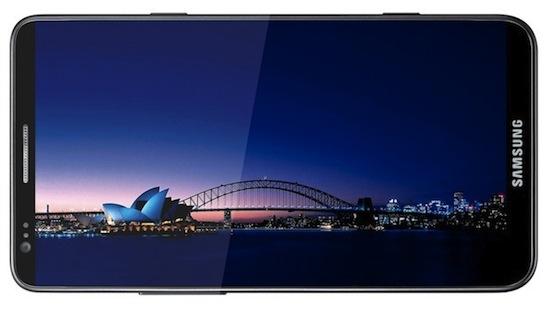
I guess you could say there are many unicorns of the mobile tech world, devices that we know probably exist in some R&D lab somewhere that will never see the light of day. Or maybe they're just years from actual production.
Whatever the case, we smartphone aficionados are always dreaming of a revolutionary product announcement. We're constantly wishing for one of our favorite manufacturers – or even a newcomer to the scene – to sweep us off our feet and woo the entire industry with something bizarre and off the wall. Some of those possible mythical phones might include: battery technology that lasts days or even weeks, a battery that fully charges in a matter of seconds, a DSLR-quality camera, a flexible chassis and display, comparable storage space to a modern laptop or gaming capabilities of current console gaming machines.
For a good two years now, another feature that fanatics around the Web have been quietly hoping for is a phone with an edge-to-edge display, a design that minimizes the bezel to an extreme. The premise is that an edge-to-edge display gives users more of what they want and less muck – or in this case, more display with less bulk.
According to a report from Bloomberg on Friday, this particular unicorn may become a reality sooner rather than later.
On Friday, Chris Velazco of TechCrunch points out that, thanks to a handful of leaks, we have already caught wind (and sight) of the Motorola DROID RAZR M and DROID RAZR HD. Prior to August 31, those are the two devices many of us had pegged for Motorola's press event in New York this coming Wednesday.
Open and close case, right? Maybe not.
The DROID RAZR HD is expected to feature a 4.6-inch 720p display (likely of the Super AMOLED Advanced type), 4G LTE and perhaps a 1.5GHz dual-core processor. Meanwhile, the DROID RAZR M hosts a similar set of features: 4.3-inch qHD Super AMOLED Advanced display, 1.5GHz dual-core Snapdragon S4 chipset and an 8-megapixel rear camera. Take note that in none of the actual leaked pictures or renders of these devices do either of these phones sport an edge-to-edge display. The bezel is not significantly slimmer than the bezel on any other competing product either.
Both handsets are just standard, run-of-the-mill smartphones from Motorola, which conflicts with Bloomberg's report from Friday. As told by their source who wished to remain anonymous, a device to be announced at the joint event with Verizon Wireless on Wednesday will feature an edge-to-edge display and LTE connectivity. Says Bloomberg:
"The model also would be one of the first full-screen phones in the U.S., meaning it uses the entire front of the device as a display. The approach maximizes the screen viewing space by eliminating the black frames or bezels around the display."
Despite all the rumors of high profile smartphones that were alleged to have edge-to-edge displays in the past (like the Galaxy S III mock-up above, which made its rounds before the device was made official), we have never actually seen a phone with an edge-to-edge display. How would such a device even look? In theory, a display that takes up 100 percent of the face of the device, a phone entirely sans bezel, sounds awesome. It may even look awesome, allowing a 4.8-inch (or larger) display to be fitted to a phone hardly bigger than your average 4.3-inch phone.
Online renders and common sense, however, allude that edge-to-edge displays might be better off left a myth, another Tony Stark gadget we can only drool over.
Believe it or not, the bezel around a display actually serves a purpose. Without a bezel, if you hold the phone the way you are used to holding your smartphone now, your gripping hand might cause a series of accidental on-screen selections. Your fingers that normally cling to the edge (and ever-so-slightly wrap over the face) will be just as susceptible to touch input as your free hand.
I don't think completely eliminating the bezel is exactly a good idea. It might look and sound awesome. But I worry how such a device would work in practice. Instead, significantly minimizing the bezel might work better. By adding a very slim buffer around the edge of a display, accidental input by spongy fingers is a non-issue.
If Bloomberg's source is correct, I guess we will learn firsthand whether edge-to-edge displays are better left a myth or if they will become the next big thing. I will be live at the Motorola event in NYC on Wednesday bringing you all the details as they unfold. TechCrunch's Velazco might be on to something, though. He says the edge-to-edge phone might be held for the Motorola/Intel event on September 18, in which they promise to bring us "to the edge." You decide.
In the meantime, tell me what you think about edge-to-edge displays. Do you want one on your next smartphone? Or do you prefer at least a little bezel to ward off accidental input?